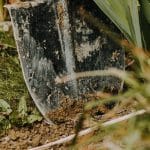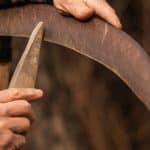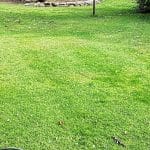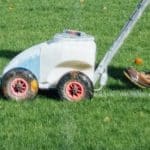Table of Contents
Both shovel and spade are mighty garden tools, ready to assist your green endeavors! But what’s the difference between the two?
Many folks out there toss around “shovel” and “spade” interchangeably, like pepperoni and salami. But once you dig deeper, you’ll realize they’re very different.
If this shovel vs. spade thingy is confusing you, by the end of this you’ll be well versed with everything to know about shovels and spades!
You see, a spade and a shovel both have their roles, advantages, and a shared disdain for dirt and debris! But let’s not jump to conclusions fast.
Instead, let’s start at the beginning.
What Is a Spade?
A spade, my amigos, is like the Swiss Army knife of the gardening world.
With its shovel handles and flat blades, a spade blade is ideal for slicing and dicing soil and roots like a hibachi chef.
It absolutely thrives in cutting through roots and maneuvering tight spaces. Spot a spade at work, and you’ll see it’s all work, no play!
What Is a Shovel?
On the other hand, a shovel is more of a rugged, tough-as-nails kind of guy. It boasts a curved blade, either rounded or pointed serving as its seamless accessory.
While a pointed blade is aptly suited for digging deep holes, a shovel’s rounded edge is your go-to choice for moving loose materials.
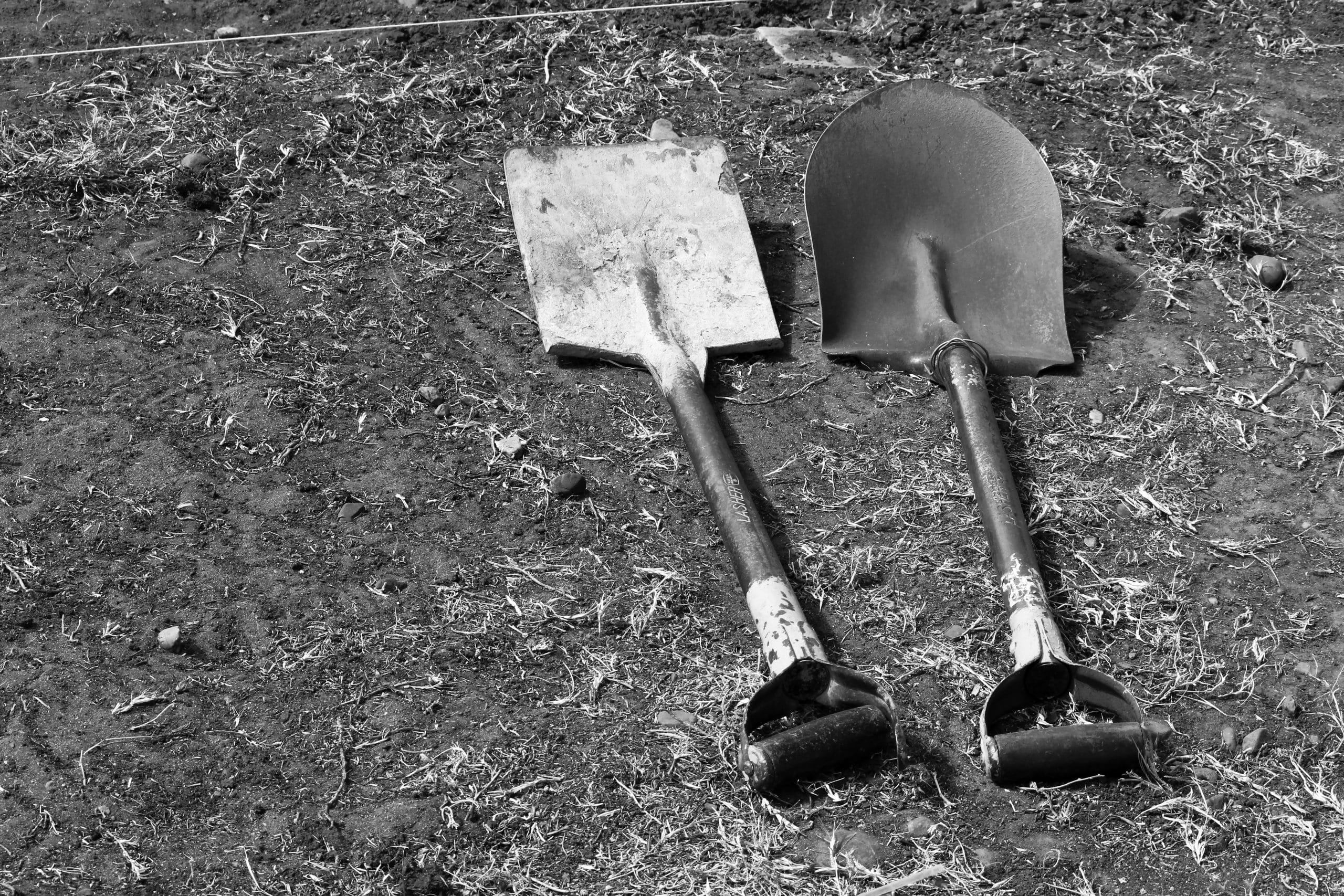
Distinguishing Between Shovel vs Spade
The whole figuring out a spade from a shovel can be confusing with their differing abilities to handle various tasks.
No worries, not everyone has an eye for subtleties. Here’s the good news: We’re about to break it down for you, folks!
Material Composition: Iron vs Carbon Steel
Though a tough nail to crack, Carbon Steel, with its sass and class, sports a longer-lasting blade and lighter weight than iron.
What makes carbon steel steal the show?
Well, it’s the less rust scenario! A sharply pointed carbon steel blade can take on anything in any environment, leaving little room for rust.
Weight, Handling, and Utility
Shovels and spades also play “spot the difference” in the handling and utility arena, folks. It’s kind of like picking between a butter knife and a chainsaw (umm, minus the scare factor).
They both can slice, but strip them down to their bare essentials, and the distinctions begin bobbing up like apples in a barrel.
Shovels, with their long and straight shaft, are set to cover larger distances, moving hefty volumes of loose materials.
On the other hand, spades are built for precision work, digging straight-sided holes, and edging right around those rows of perennials.
The Purpose: Digging vs Lifting
Function is the hefty breed that wins the prize here.
It’s rooted in their purpose. The shovel, easier to scoop, allows you to wear a hard hat, and scoop up dirt, sand, gravel—you name it. Now that’s one heavy-duty task, ain’t it?
On the other side, digging spades can help dig deeper holes fit for last year’s mistakes, ready for a new season’s dreams. Given the blade’s straight edges, it carves through, leaving a straight-sided hole so immaculate.
Analyzing the Shape of Spades and Shovels
However, picking a spade or shovel for the job you want to do is more than its material and purpose. You also need to look at other features of it.
For instance, the rectangular blade of a spade makes in ideal for digging larger holes or trenches. Whereas the blade of a shovel is best for digging harder surfaces like gravel or stones.
Blade Shape
Slicing through the complex, the characteristics of shovel and spade blades gusts like a Santa Ana wind. A larger blade on your shovel can stuff more stuff—like a sack of potatoes at the county fair, but watch out!
A bigger scoop packs heavier punch, and you don’t want your back to take a rollercoaster ride. Angled to itch, the pointed blade can penetrate hard ground, an advantage for that heavy-duty work.
On the other hand, a flat spade blade is ridin’ high for edging and lifting those loose materials faster than you can say “jack rabbit”.
Handle / Shaft Design
Can’t steal the show without yappin’ about handles—or, shafts, if you want to get technical. A longer one tips its hat to leverage. Picture a teeter-totter, pros lifting heavy stuff sure can relate.
On a shorter handle, however—let’s call it the bulldog of the duo—a shorter bite on grip but plenty of control.
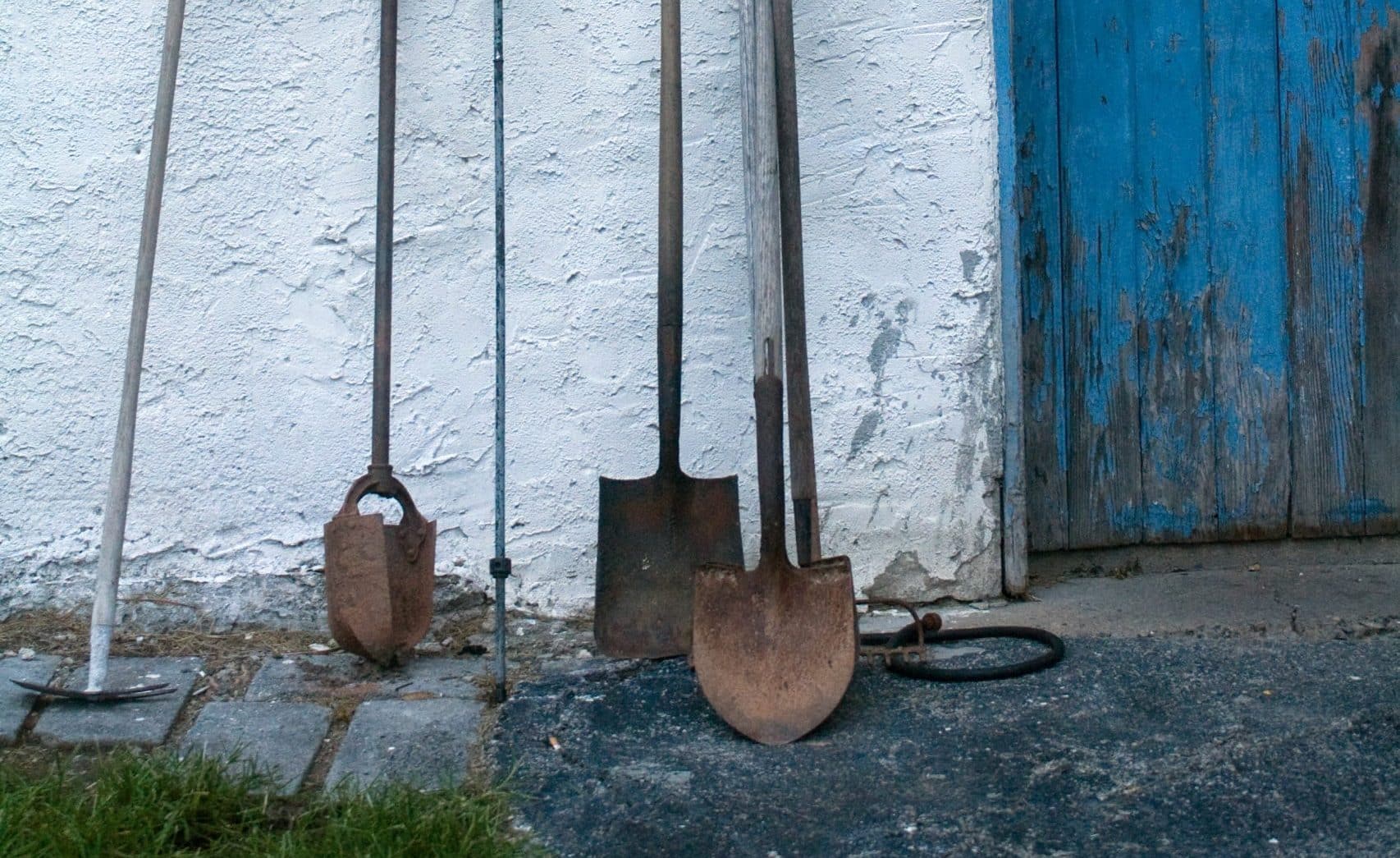
Types of Spades for Gardening
A spade is more at home in soil than a worm after a fresh rain. Sharp and straight, spades typically slice through dense earth like a hot knife through a cold cube of butter.
The role of digging trenches or manicuring garden bed edges hand-picks this tool as the belle of the ball.
Garden Spades
A gardener’s best bet, a garden spade, dons a deeply scooped blade. Mind that ledge though, your foot might find it, and ouch! With this in hand, you’re in for a slow dance with nature—a chance to dig under the green grass, uncover comfy spots for flora introduction, and accompaniment in creating garden outlines anyone would be jealous of.
Edger Spades
So, if you’re a bit of a green thumb, then you know how important it is to keep your green spaces looking slick. An edger spade, despite its name, is for this- it’s more of a lawn tool, truth be told.
With its trim, slender blade, it can squeeze into the smallest of cracks to cut off any pesky weeds or grass thinking they can grow where they aren’t supposed to.
Nope, this ain’t your ordinary garden tool. Take it from me, an trusty ole’ edger spade is as sharp as a flamingo on roller skates. It’s better than an electric edger, mainly because it can reach places where your electric buddy fears to tread.
So, whether you’re trimming the edges of sidewalks or giving a neat finish to your garden bed, these are sure to keep your green world spic and span.
Root Spades
If there’s a Mike Tyson in the world of spades, I’d bet my boots it’s the root spade. These bruisers got a straight, tapered blade ending in an inverted ‘V’, making them perfect for dealing with roots and larger weeds, cutting through them like butter.
And the best part? Some root spades come with serrated-edged blades, a bit like a bread knife, perfect for gripping the root and tearing it right out.
With a root spade in hand, even tough terrains will be as manageable as a stroll in the park.
Types of Shovels for Gardening
Some folks confuse shovels and spades to be the same thing, but they’re not. The curve – or lack of it – on the blade is the giveaway.
The kinds of shovels you can get are;
Digging Shovels
If you’ve been around a tool shed once or twice, you’d have bumped into a digging shovel. These big boys come with a wide, scooped blade that leans forward. Add to that a round and pointed or flat bottom, and voila, you’ve got the perfect tool for transplanting trees or punting out weed bullies.
Those two footpads at the top of the blade? They’re there to give you a deeper bite into the ground when you step on them.
Digging shovels are pretty tough, thanks to their strength and durability. They usually have long, straight handles, sometimes made of wood or fiberglass.
Scooping Shovels
Moving on to the scooping shovel. These are generally most used in areas where snow gets more footfalls than folks. Just picture your standard snow shovels, only bigger and equipped with a dustpan-type scoop.
A scooping shovel is ideal for moving large amounts quickly – like mulch, potting soil, or compost. They’ve got these high rising sides to make sure none of the load runs away.
But remember, just like a stadium sized recliner, these bulky bad boys require a lot of elbow room, so keep that in mind next time you’re picking out shovels at the store.
Trenching Shovels
Ever wanted to dig neat, shallow ditches? Might want to look into getting yourself a trenching shovel, partner. They’ve got a much narrower blade than the digging shovel, making them the ideal tool for forming straight rows.
When you peek at a trenching shovel up close, you’d see these little ‘lips’ on the edges of the blade that help smooth out the walls of your trench.
You’ll even notice a ‘V’ point at the bottom edge that’s all about maximum cutting power. So next time you’re thinking about laying an irrigation pipe or shoveling some thick, hard clay, give a nod to the trenching shovel.
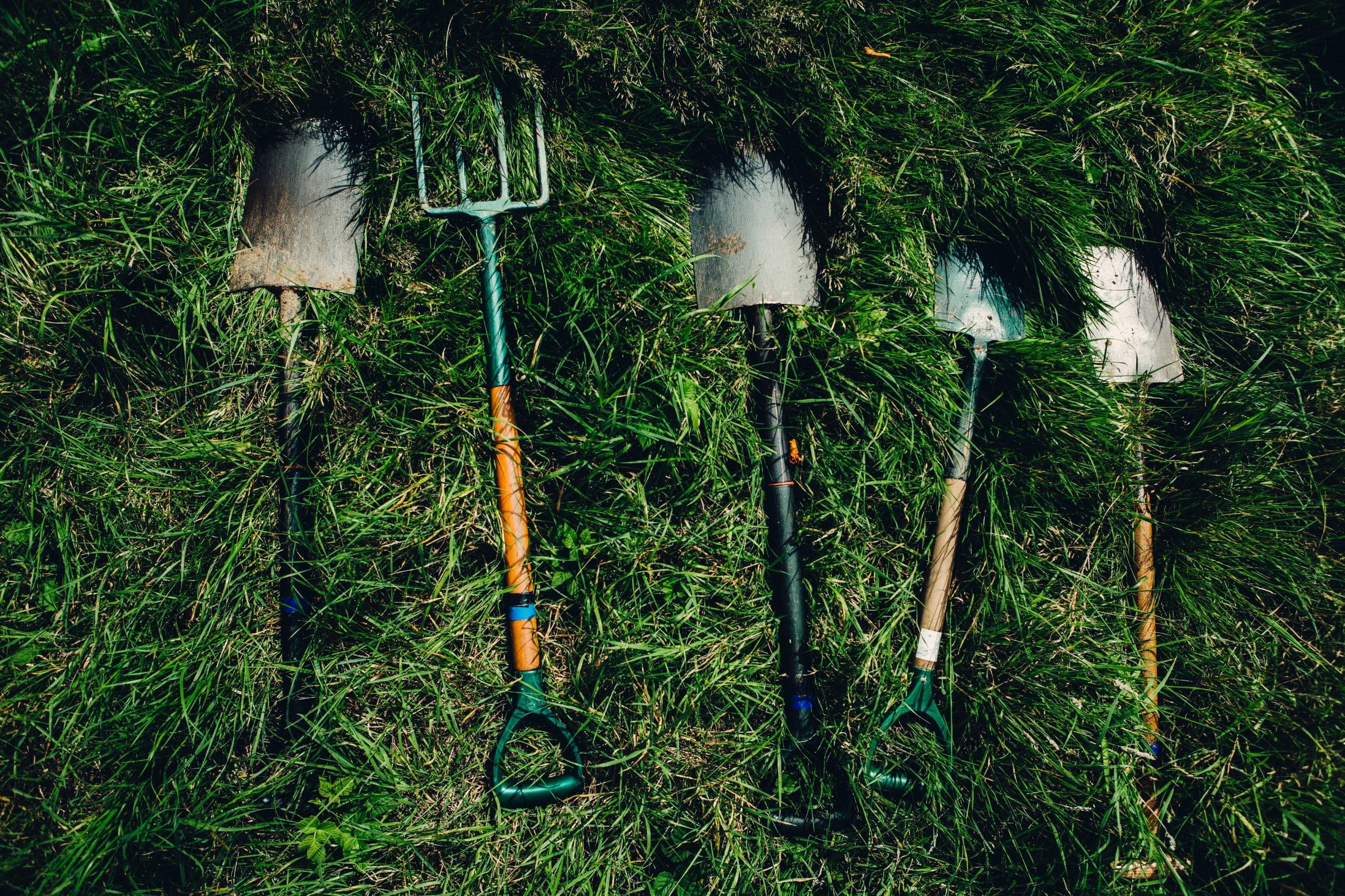
Assessing the Material of Spades and Shovels
When it comes to spades and shovels, you need to keep your wits about you. What they’re built from dictates not just the price, but also their might and lifespan. Different materials get worn out at their own pace and all can be negatively affected by harsh conditions.
Blade Material
Now here’s a fun fact for you – it’s a toss-up between iron and carbon steel for the title of strongest blade material. Carbon steel might seem like the underdog, but don’t be swayed by appearances.
This little contender packs a real punch, offering a blade that just keeps going, like an Energizer bunny in a karate match. It has the bonus of being lighter than iron and it’s as resilient to the weather as a rubber duck in a hurricane. Far less rust on a carbon steel blade, makes for happier gardening I’ll tell you that much.
Handle Material
Now for the old faithful, wood. It’s the staple diet for shovel and spade handles. People are drawn to wooden handles like a moth to a lamp, and it’s a fine choice as long as you’re willing to give them some TLC.
They need a good sanding every so often to keep the splinters at bay, and rain is their kryptonite, so keep them stored away. As they get on in years, wooden handles might snap like a dry twig under heavy loads.
But fear not, if your tool is of good pedigree, handles can often be replaced.
Conclusion
The spade vs shovel clash is one all gardeners bump into sooner or later. These tools might seem like they’re as similar as two crows in a farm field, but they differ in many ways.
From being better suited to certain tasks, to sporting different weight, blade shape, handle, and spending potential. Understanding these variances can help you work smarter in your gardening endeavors. Wouldn’t want to use a wrecking ball to hang a painting, would we? Whether you’re a greenhorn or an old hand, insight into the spade and shovel tale can help you make the best gardening tools decision possible.
Now you might be thinking, “Okay, I’ve got this. Spade equals playing in the soil, Shovel equals moving things around. Got it.”
But remember, it isn’t always that simple. You wouldn’t use an electric leaf to trim your rose bushes, nor would you try to water your tomatoes with lawn sprinklers.
Every tool’s got a job and it’s important to find the tool fits the job perfectly!

I’m John, a “seasoned citizen” and an avid gardener. I live in Minnesota, where our weather and growing conditions can be harsh and challenging. Over the years, I have learned a thing or two about being successful in growing things. I have curated these tips, which I think are helpful for the beginning gardener and the seasoned experts. If you have feedback, let me know in the contact form.

